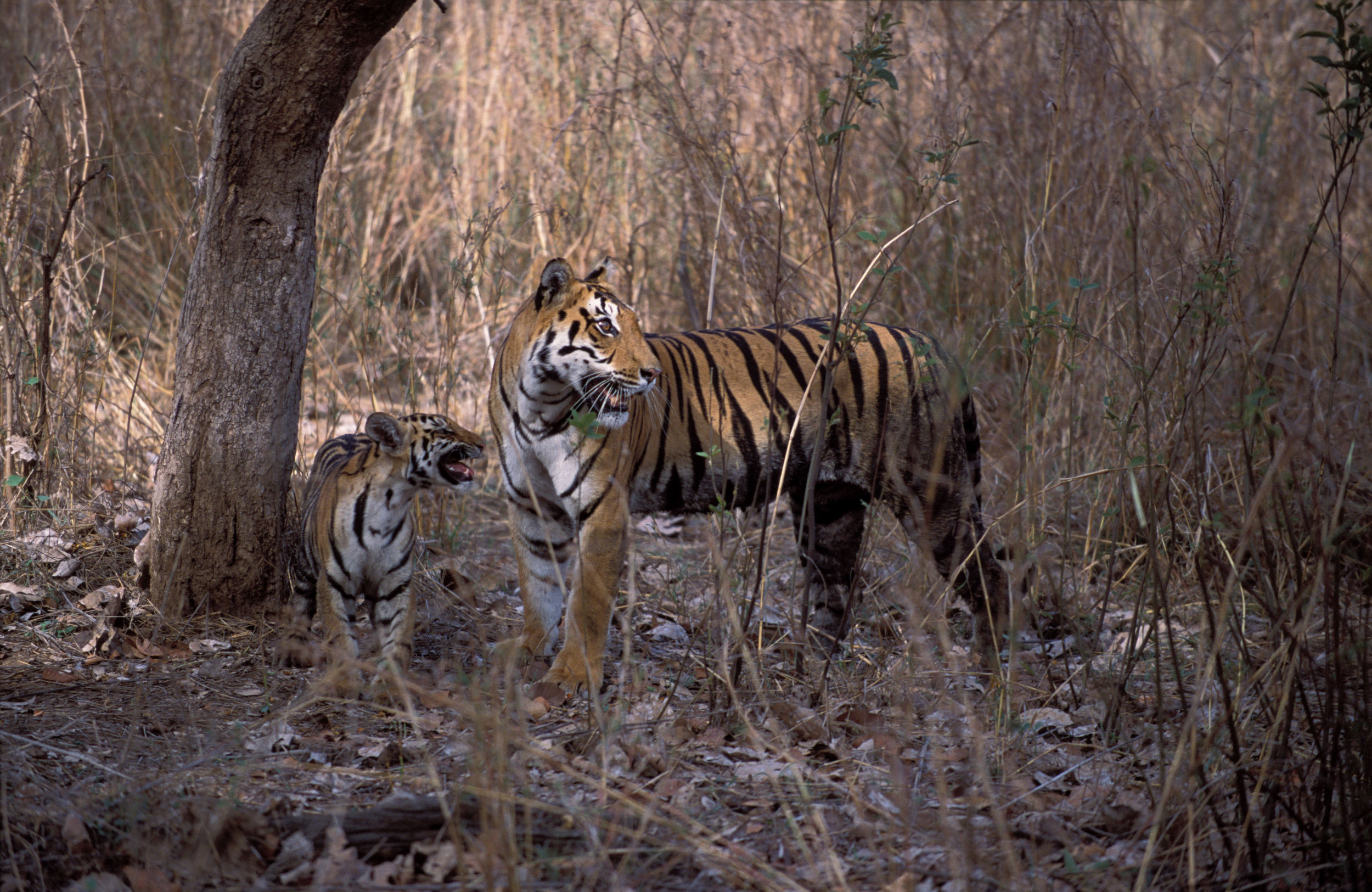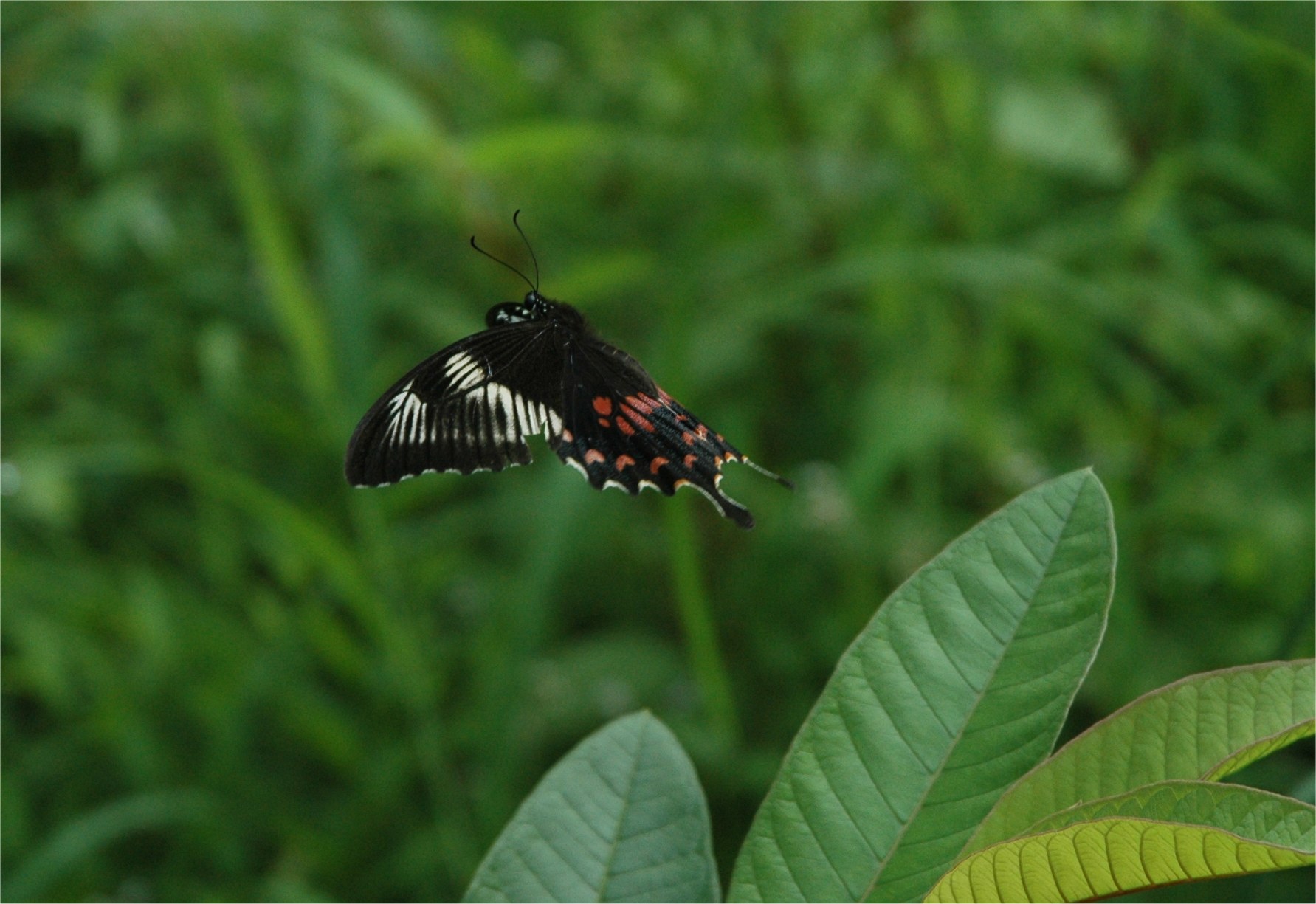Majestic forest, winding tracks, a termite mound, bird song. Misty grasslands, a herd of deer, filtered hues and sunbeams. Bamboo groves, sacred trees, playful langurs, an alarm call... this is where the tiger roams.
Kanha Tiger Reserve is one of India's largest and finest forest landscapes. It lies within a series of plateaus in the Maikal hills, east of the ancient Satpura range in central India. The 1945 sq km area encompasses the Banjar and Halon river valleys, which were joined in 1972 to declare Kanha among the first group of reserves in India to be protected under 'Project Tiger'.
Kanha's inhabitants include four species of deer, including the rare 'hard-ground' barasingha, only found at Kanha; gaur, the world's largest wild cattle; handsome dhole, otherwise known as Indian wild dog; jackal; wild boar; four species of antelope; sloth bear; leopard and a healthy population of over 100 breeding tigers.
The diversity of habitats plays host to over 300 bird species, including racket-tailed drongo, golden oriole, crested serpent eagle, peacock, scarlet minivet, bee-eaters, kingfishers, rufous treepie, brown fish owl, honey buzzard, wagtails, jungle fowl, whistling ducks, sandpiper, Asian paradise flycatcher...
Other spectacular creatures include swallowtail butterflies, Indian rock python, monitor lizard, giant wood spiders, rhinocerous beetles, keelback snakes, weaver ants, fan-throated agamas, flying squirrel...
History of the reserve...
Kanha's indigenous forest dwellers, the Gond and the Baiga, were shift cultivators who practised 'slash and burn' techniques. They were some of the country's finest shikaris (hunters) and collected forest produce such as berries, honey, mushrooms, roots and mahua flowers.
In the 1800's, the area was preserved as a hunting estate. Elaborate shooting parties roamed the forest on elephant-back using the skill of the local shikaris. By the 1970s, the country's tiger population had dropped to an alarming figure and hunting was banned.
In 1972, Project Tiger was established to revive the tiger population in nine prime locations across the country, including Kanha. It involved forming an inner core area - from which all villages were relocated, and an outer buffer zone where agriculture would take place, including cattle grazing and the collection of forest produce and fallen wood. The meadows that we see inside the reserve today are the old village sites.
In 1983, Phen Wildlife Sanctuary, a 110 sq km area was established and incorporated as part of Kanha’s buffer zone.
Park management includes maintaining water bodies and protecting natural grass species. Forest fires are controlled by firelines and watch-out towers. Patrolling takes place from outposts, by foot and elephant back by dedicated staff. Tigers are monitored through camera traps, pugmark identification and occasional radio-collar projects.
Poaching and loss of habitat due to forest encroachment remain the tiger's biggest threats globally, both of which affect Kanha but are largely under control.
Kanha today...
Kanha receives thousands of visitors each year. It is one of India’s most popular tiger reserves but is also famed as one of the best-managed. Due to its remote location, Kanha attracts visitors who are serious about wildlife and willing to travel. Its large size and excellent road network allow you to either focus on areas frequented by tigers or explore quiet tracks that few jeeps visit.
Kanha is fully open from 16th October to June 30th, closing for the monsoon. Access is permitted, by jeep, twice a day; morning and afternoon, except on Wednesday afternoons, and the full day on Diwali and Holi.
Twenty percent of the core reserve is accessible for tourism. This is further divided into 4 tourist zones. You can visit one zone per safari, with complete freedom within each zone.
Entry permits for each zone are released on a limited quota 120 days in advance. It is highly advised to book as early as possible.
Full-day photographer's permits are also available at a premium. Contact us for more information.
A separate and additional quota of jeeps is permitted for safaris in the buffer zone, including a further quota for Phen Wildlife Sanctuary.






































